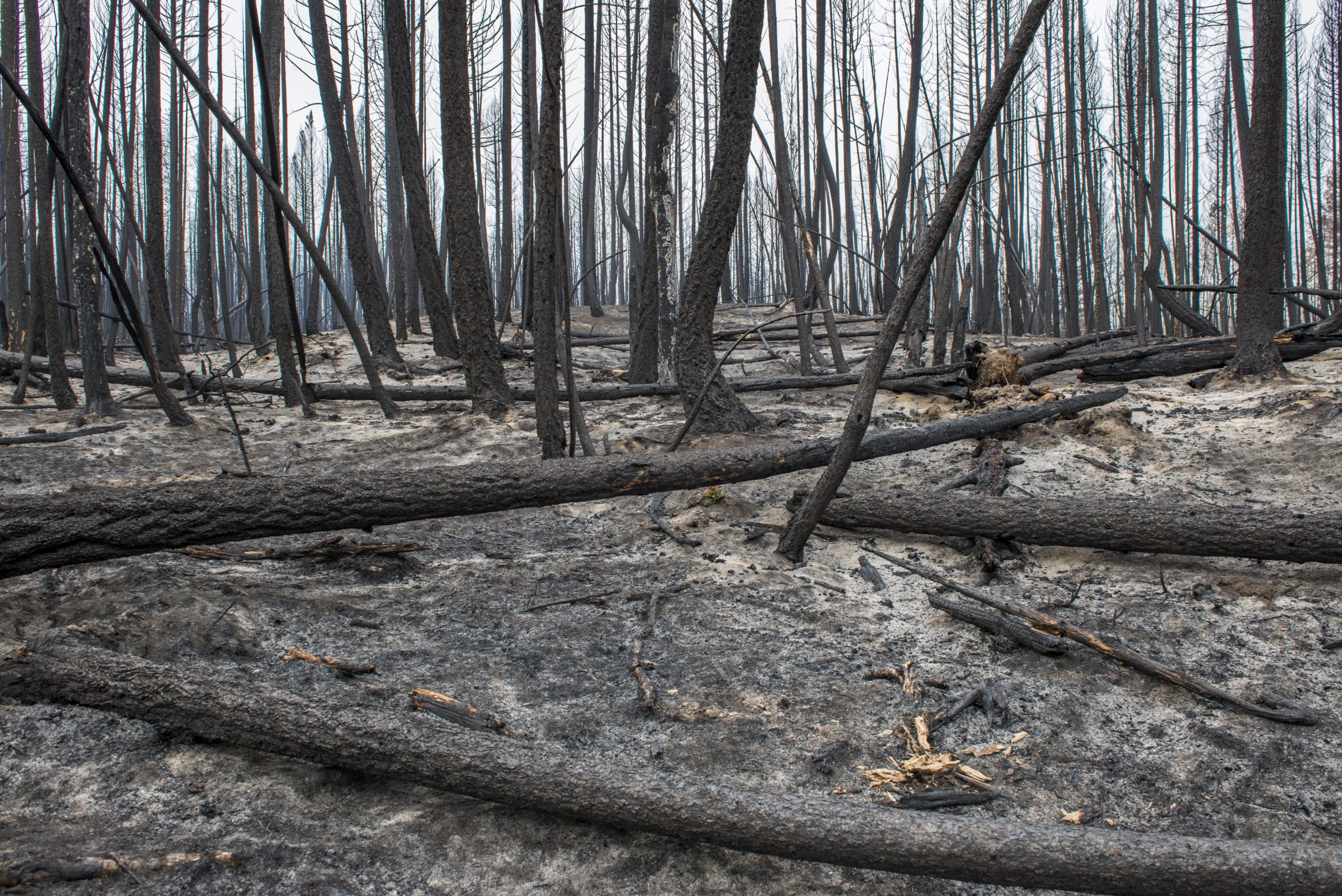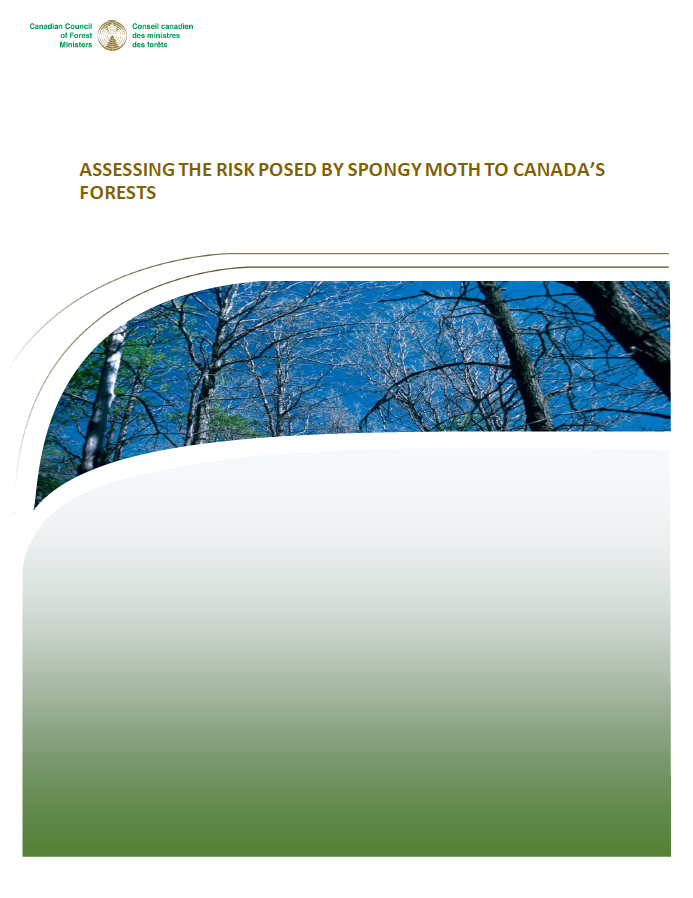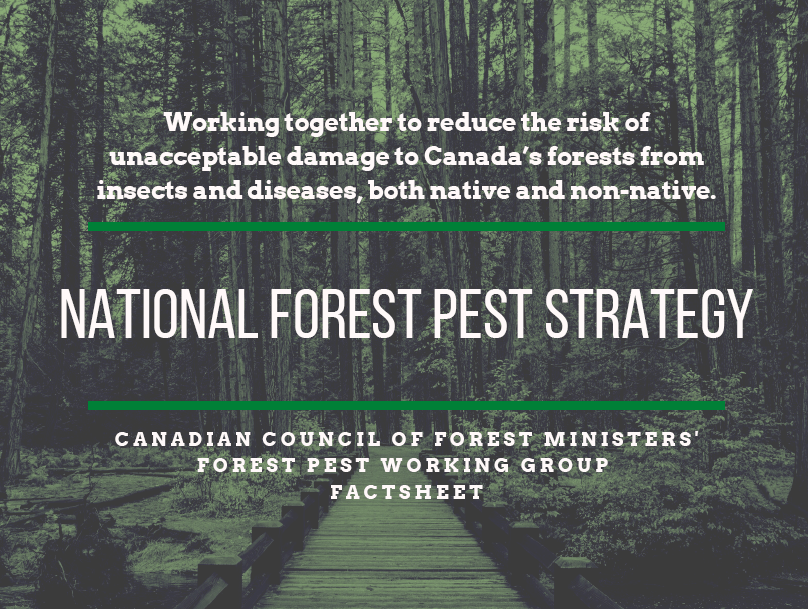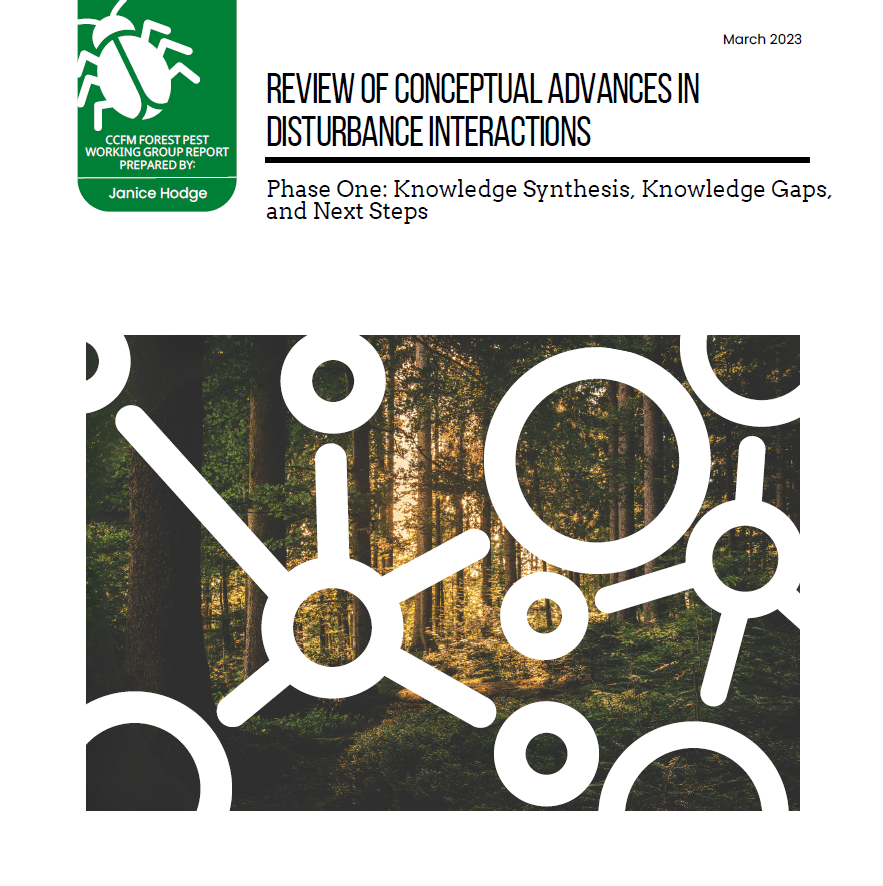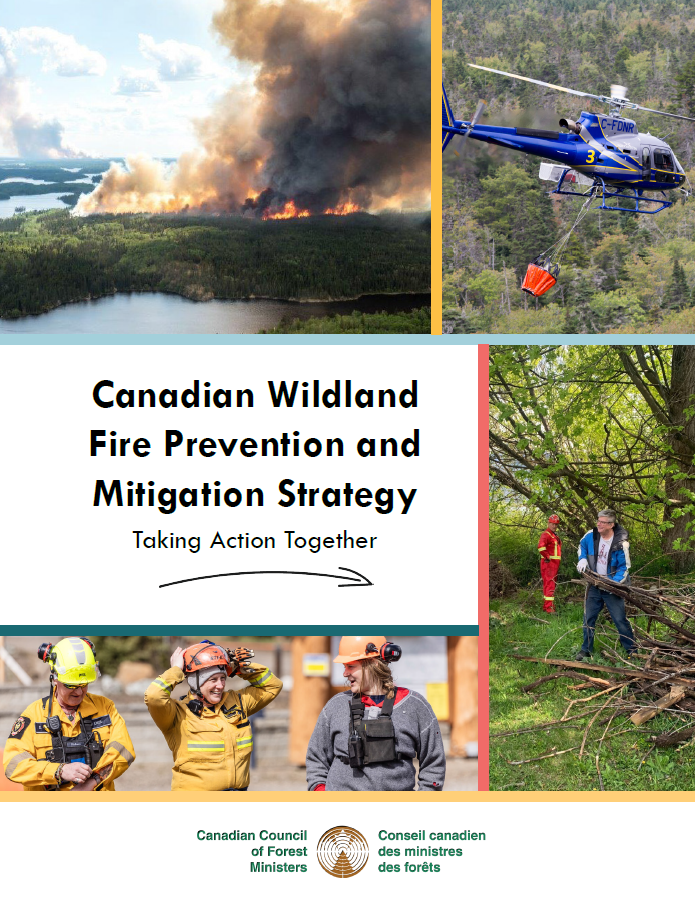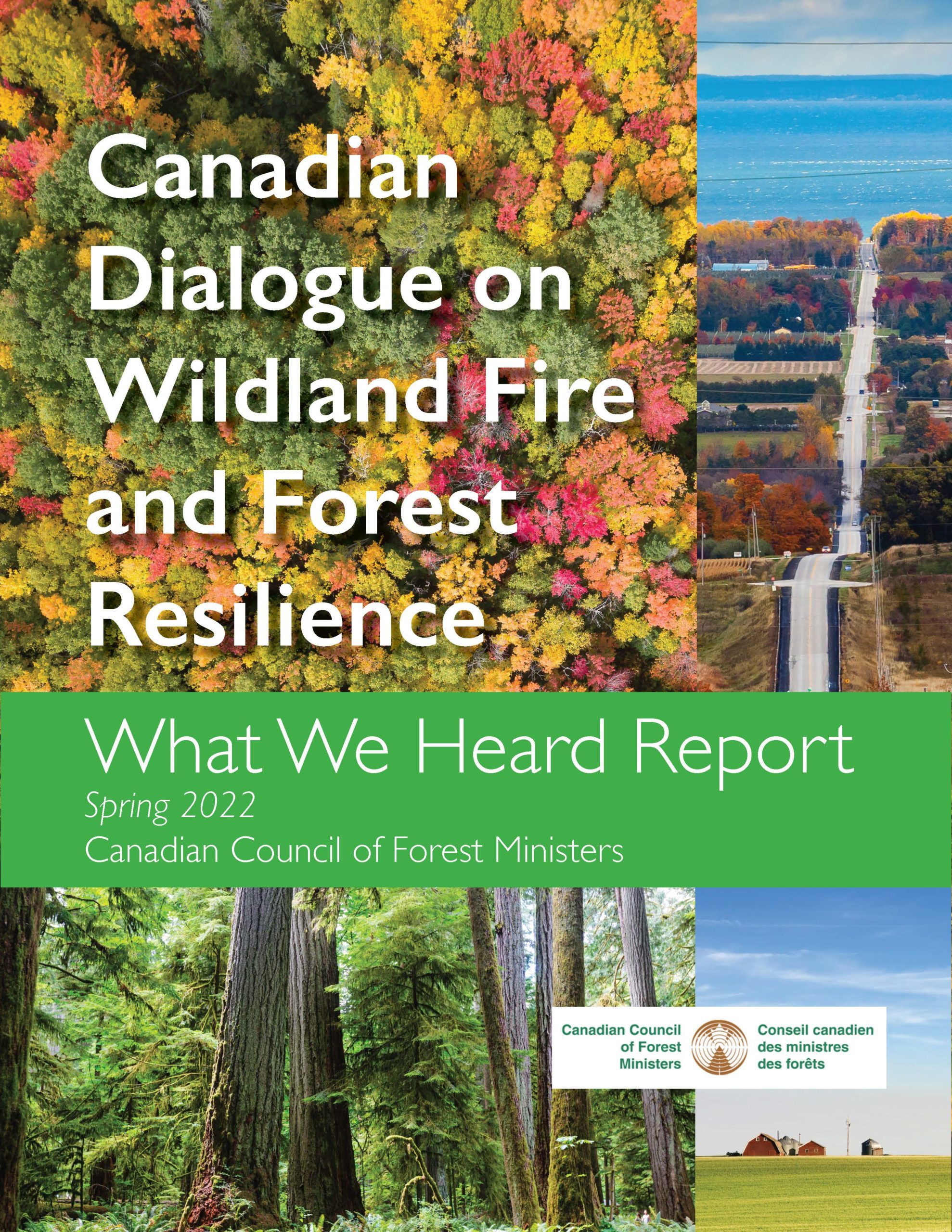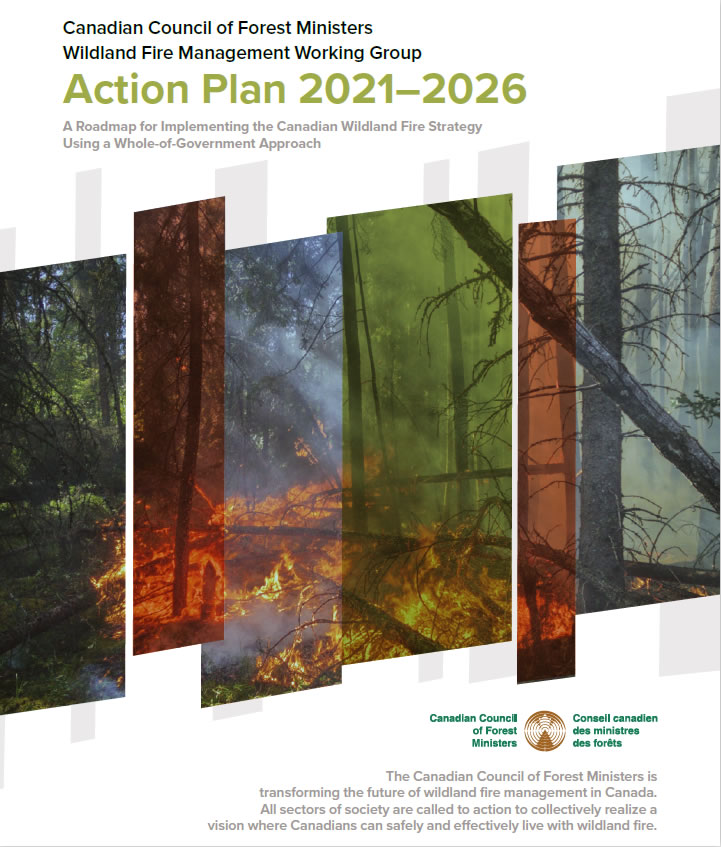Natural disturbances have important impacts on forests by enhancing forest renewal and succession through the release of nutrients from affected trees and the reduction of competition among surviving and newly establishing trees.
Conversely, natural disturbances may have negative impacts on forest ecosystems or the people, communities and businesses who rely on forests. Exotic or non-native insects and diseases introduced through global trade (e.g. emerald ash borer, Asian long horned beetle) can have serious negative impacts because Canada’s native forests may not be adapted to them. Also, wildfire can pose threats to human safety, property, and infrastructure. Natural disturbances can also temporarily reduce the supply of timber, with socio-economic impacts on communities and citizens.
Forests play an important role in the carbon cycle as they absorb carbon as they grow and release it when they die, decay, or burn. The impacts of natural disturbances are among the many complex factors that determine whether forests absorb or release more carbon each year.
Virtually all natural disturbances are affected by climate or weather conditions. Therefore, any change in climate regimes can result in important changes to disturbance dynamics. For instance, rising temperatures over the last three decades have increased wildfire activity in Canada, especially in western Canada. Future changes in precipitation may result in drought or floods and cause changes in the severity and frequency of insect and disease outbreaks. Impacts on Canada’s forest and the forest sector could be significant, notably by causing timber supply shortages across the harvesting land base.
Natural disturbances vary from one region to another within Canada. For example, eastern spruce budworm outbreaks are most prevalent in the spruce and fir forests of eastern Canada, while wildfires burned more areas annually in the boreal forest and the taiga in central Canada. Some disturbances are specific to a particular tree species (e.g. mountain pine beetle affects mostly pine species) while others, like wildfires, can affect the whole landscape, thus resulting in specific ecological dynamics. Disturbance severity can strongly vary, with some being stand-replacing like crown fires, and others causing only partial mortality, like surface fires.

Wildfires
Wildfire is a natural and essential ecological process in most of Canada’s forest health, succession and nutrient cycling; however, as was illustrated during the Fort McMurray wildfire in May 2016 and more recently the 2018 wildfires in the British Columbia interior, it can also have undesirable social and economic impacts. Deemed the most expensive natural disasters in Canadian history they threatened homes and businesses (e.g. tourism, logging, mining) in forested areas, triggered evacuations, disrupted people’s lives and livelihoods and produced large amounts of smoke affecting human health and safety.
In 2018, there were more than 7,000 wildfires in Canada, burning almost 2.3 million hectares of forest, with both numbers close to twenty-year averages. Though the national totals are close to average, in 2018, many wildfires occurred in places where large wildfires are unusual, including Vancouver Island, the Manitoba Interlake region, and Parry Sound, Ontario.
For details on current status and the future outlook for this indicator see
The State of Canada’s Forests 2019 Report: forest fires.
Wildland fire management: balancing the bad and the good
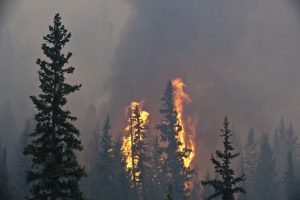
Not all wildland fires should or can be controlled. Forest agencies work to harness the force of natural fire to take advantage of its ecological benefits while at the same time limiting its potential damage and costs. This makes wildland fire control strategies a vital component of forest management and emergency management in Canada.
To protect Canadians, private residences, businesses, wood supply and critical infrastructure, Canadian wildland fire management agencies invested between $800 million to $1.4 billion annually over the last 10 years. As climate change is causing weather conditions that are more conducive to wildland fire, expenditures are projected to increase rapidly, particularly in western Canada.
Under the direction of the CCFM and in accordance with current jurisdictional mandates, the federal, provincial, and territorial governments cooperated to establish the Canadian Wildland Fire Strategy (CWFS), which was renewed in 2016. The CWFS seeks to balance the social, ecological, and economic aspects of wildland fire. It is designed to facilitate the development and implementation of an innovative approach to wildland fire management in Canada that will foster resilient communities and an empowered public, develop healthy and productive forest ecosystems, and incorporate modern business practices.
Empowering the public and increasing community resilience
Where people and forests come together, wildland fire is an issue. As more people purchase recreational properties in forested areas or move into residential developments in forested areas, they are increasing their potential exposure to wildland fires. The effects of climate change may also lead to an increase in the incidence of wildfires experienced by communities in the future.
According to the CWFS, initiatives and programs that support the establishment of resilient communities are of critical importance. Public awareness programs such as FireSmart® are helping communities manage and reduce wildfire risk.
Forest insects
Outbreaks of forest insects and diseases pose serious risks to the health of Canada’s forests and the success of its forest sector. Although they generally play an important role in ecological processes, forest pests can also have significant negative economic, social, and environmental impacts on forested lands of both rural and urban areas across the country.
Insect outbreaks are second only to wildfires in the impact they have on Canada’s timber supply and carbon stocks. Prolonged or intense outbreaks of defoliators can cause tree mortality, but more typically forests respond through reduced growth and vigor. With the effects of climate change and globalization, forest pest infestations are expected to become more frequent and less predictable in the future.
Monitoring trends in insect groups allows researchers and forest managers to assess overall forest health. In 2017, 15.6 million hectares of forests were affected by insects in Canada, which is within 1 per cent of the previous year’s value.
Forest insect management
The focus of forest pest management in Canada is on:
- Maintaining the health of the country’s forests by managing native pest disturbances that threaten ecosystem values and the forest sector’s access to commercially important timber and related resources
- Preventing the entry and spread of alien species into the country
To achieve these ends, Canada — the provincial, territorial, and federal governments — takes an integrated pest management approach. In integrated pest management, interventions carried out are based on knowledge about what their short- and long-term impacts might be and involve targeting both the area and pest in question.
Forest diseases
Forest disease is not always lethal, but can impact a tree’s growth rate, volume and wood quality and may ultimately kill the tree.
Forest diseases are caused by pathogens, which are biotic agents that disrupt normal tree functions. Abiotic factors such as changing weather regimes, too much or too little precipitation, or extreme temperatures may affect their growth and development and can increase the susceptibility of trees to forest diseases.
All tree parts are affected by disease:
- Foliar pathogens cause reduced photosynthetic capability
- Stem pathogens cause structural problems that disrupt water and nutrient flow and lead to breakage or decreased wood quality
- Root pathogens cause reduced water and nutrient uptake
Disease management
Forest managers manage disease to reduce losses and enhance forest resilience.
In natural settings, native diseases caused by native pathogens assist nutrient cycling, create habitat, and enhance biodiversity.
In commercial forests, diseases may be managed to prevent losses in tree volume and wood quality.
Tree breeding and silviculture have been used to manage disease and optimize growth.
Environmental conditions are important for moderating the interaction between the tree and the pathogen.
For more information, see The State of Canada’s Forests 2019 Report: forest diseases.
Wildland Fire Management Working Group
In 2007, the Canadian Council of Forest Ministers approved the formation of the Wildland Fire Management Working Group (WFMWG). WFMWG members are senior federal, provincial and territorial forestry and/or wildfire management officials.
The WFMWG provides strategic advice and policy guidance on wildland fire management; promotes strategic improvement to wildland fire management in Canada; and guides the implementation of the Canadian Wildland Fire Strategy.
Forest Pest and Diseases Working Group
A collaborative, national approach that optimizes management expertise and resources is important to mitigate unacceptable impacts from new and existing insects and diseases at varying scales throughout the country. In this regard, the Working Group of the CCFM facilitates ongoing discussion and collaboration between federal, provincial, and territorial management agencies in Canada.
Its work focuses on the development and implementation of a National Forest Pest Strategy, providing an integrated framework for prevention, detection, and response. The aim is to help all the jurisdictions involved work together with the common goal of maintaining healthy forests and a sustainable forest sector.
Provincial, territorial, municipal, and federal governments work together through the National Forest Pest Strategy to reduce the risk of unacceptable damage to Canada’s forests from insects and diseases, both native and alien.
The Forest Pest and Diseases Working Group is working towards best practices for analysis, decision-making and action to make forest pest management in Canada more proactive, more coordinated, and ultimately more effective.
